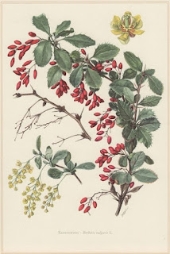
 1
1




 5
5




“The most important decision we make is whether we believe we live in a friendly or hostile universe.”― Albert Einstein

 1
1








Eino Kenttä wrote:The same thing happened in Europe, with Berberis vulgaris. But if I got it right, they dropped the goal of eradicating barberry here, because modern wheat varieties are resistant to the fungus...
Also, a thought. If I understood you correctly, since you mentioned goldenseal, you're looking for a backup source of berberine? Have you considered Oregon grape, Berberis (Mahonia) aquifolium? It's at least native to North America, even if it might not be found locally where you are.








 1
1




Maieshe Ljin wrote:....It would be interesting to figure out why the people of old would grow barberry intentionally if wheat was their sustenance or cash crop. Maybe they had habits practices that prevented stem rust that were supplanted when people began to supplant traditional agriculture with scientific.
“The most important decision we make is whether we believe we live in a friendly or hostile universe.”― Albert Einstein
 1
1




Maieshe Ljin wrote:I’ve also had similar troubles finding the native species of reed, Phragmites americanus, which I’d really like to plant. Some of these maligned native plants (P. americanus was subject to similar extermination measures as P. australis for
a while due to them being lumped together as one species) can be very hard to find. I’m glad that Phaseolus polystachios has gotten the attention they deserve.
Maybe some other permies know some patches of these plants near them?…





|
If we don't do the shopping, we won't have anything for dinner. And I've invited this tiny ad:
The new permaculture playing cards kickstarter is now live!
https://www.kickstarter.com/projects/paulwheaton/garden-cards
|




